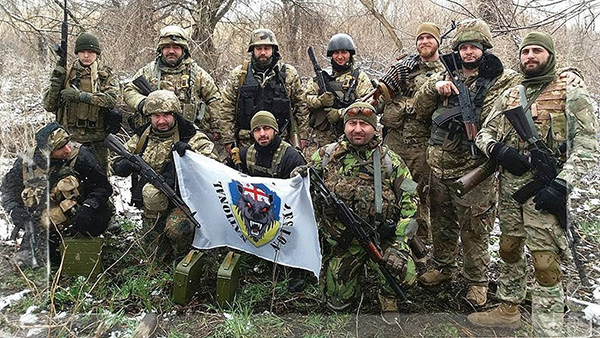
U.S. has a long history of subcontracting dirty counterinsurgency operations to brutal proxy forces–the Georgian Legion is but the latest
The Georgian Legion stands out among the many right-wing militias of Ukraine.
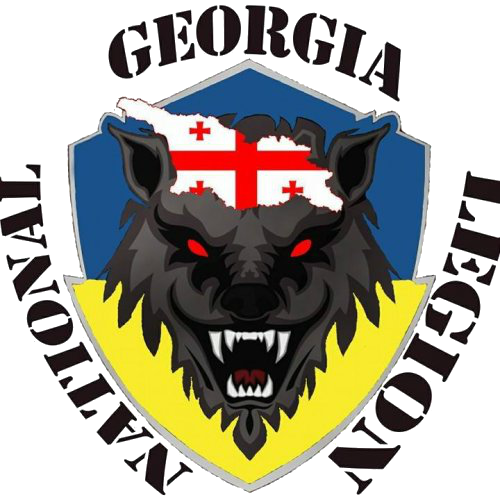
While most of the new breed of Ukrainian fascists are active on social media, the Georgian Legion has gone beyond Telegram and risen to mainstream appeal through clever internet memes. An army of trolls called the “Fellas” with cartoon Shiba Inu avatars earned through donations to the legion prowl social media, eager to dog-pile and mass-report anyone who questions official narratives.
This cutesy exterior is cover for a unit every bit as brutal and violent as their Nazi counterparts.
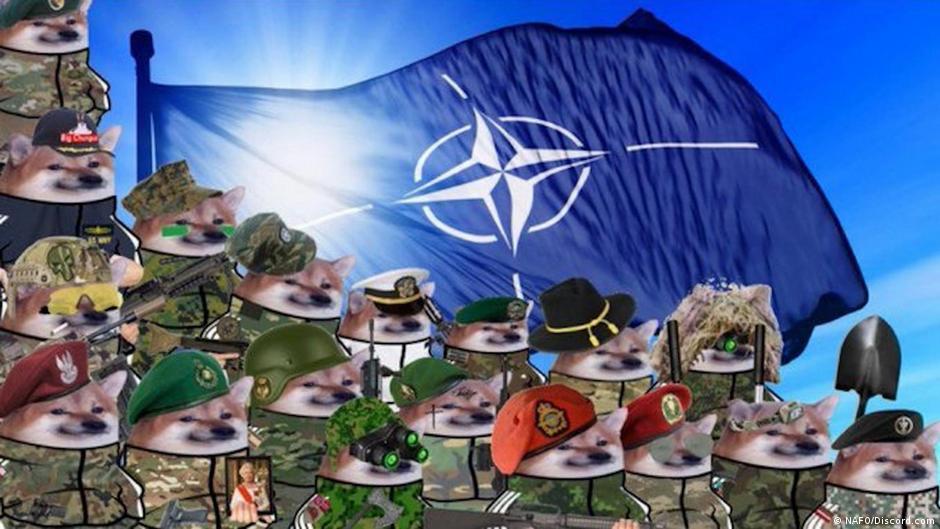
The Georgian Legion prides itself on never taking prisoners, releasing videos on its social media of ISIS-style executions of bound, tortured POWs that are so brazen even Western intelligence cutouts such as Bellingcat and Western press agencies like CNN and The New York Times have confirmed their authenticity.
Despite this, the Georgian Legion finds support not just among internet trolls, but also from people at the highest echelons of American power. Congressman Adam Kinzinger, the “never Trump” Republican (who voted pro-Trump 90% of the time in Congress), is one of their most vocal backers.
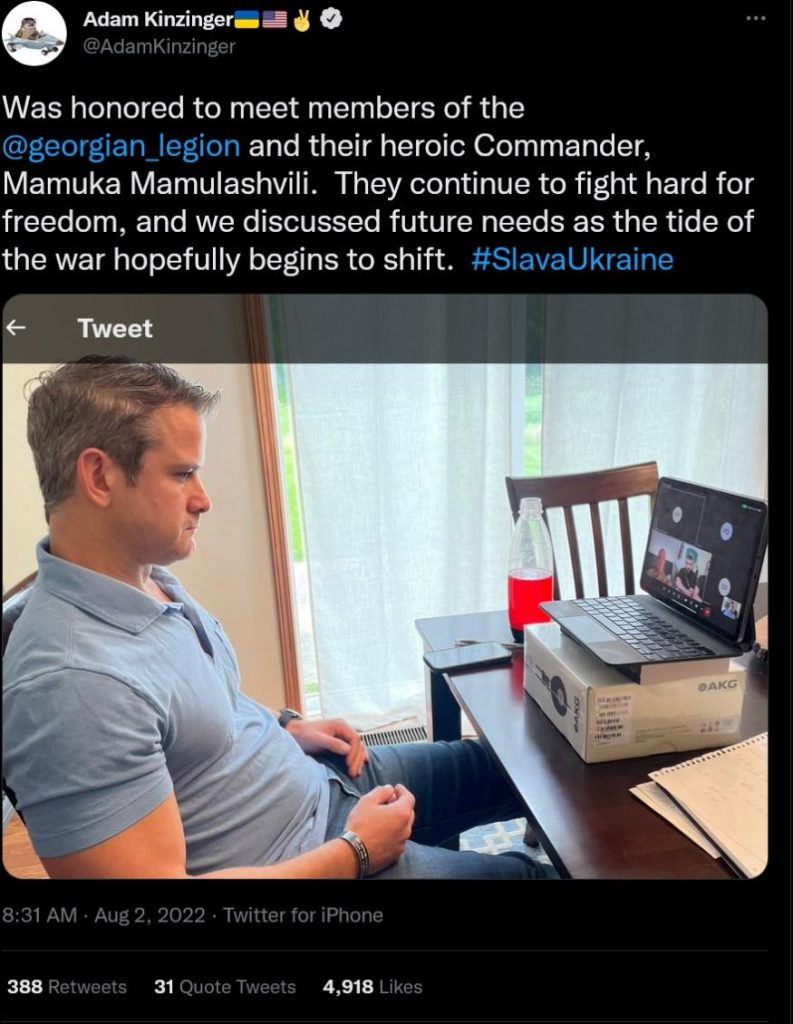
While their fame is new, the unit is not. Officially founded in 2014 by Mamuka Mamulashvili, the unit traces its roots back to the disastrous collapse of the Soviet Union, specifically the ethnic conflicts in Georgia and Abkhazia.
Abkhazia
“[Minorities] should be chopped up, they should be burned out with a red-hot iron from the Georgian nation…. We will deal with all the traitors, hold all of them to proper account, and drive [out] all the evil enemies and non-Georgians…!”—Zviad Gamsakhurdia
Georgia has always been a borderland. Located in the heart of the Caucasus mountains between Russia, Iran and Turkey, Georgia and its people have been wedged between great powers for most of their existence. Throughout the centuries, Georgia has been ruled at times by its home-grown monarchs along with Romans, Ottomans, Sassanids, Timurids, Mongols and Russians. All of them have influenced the development of Georgian culture in some form. As usual, the nationalists arguing for some sort of ethnic purity are arguing against their own history.
Georgia sits not just on a physical border, but cultural and religious ones as well. It is the dividing line between Orthodox Christianity and Islam in the region, which has led to countless struggles in its long history. Georgia has remained mostly Christian despite numerous invasions from the region’s Muslim powers, which is a point of pride for many Georgian Christians.
Christianity became, in Iberia (the largest of the two kingdoms which would become Georgia), the state religion in 319 CE and, by the 7th century, Georgian orthodoxy began to take on a distinct form. The unique history and tradition of the Georgian church were nearly snuffed out by the Romanovs. The Tsars put the Russian Orthodox Church in charge of the Georgian church.
Due to this decree, countless works of Georgian art, literature and history were destroyed in an attempt to unite and Russify the Orthodox faith. Even Georgian language services were discontinued in favor of Church Slavonic. Ironically, it is because of the Soviets, particularly Stalin, that the Georgian Orthodox Church was able to regain its ancient traditions.
Georgia came under Russian control in 1801. It remained so until Imperial Russia’s collapse, leading to a brief period as a German puppet state from 1918 to 1921 when it was recaptured by the Red Army. By this point, the northeastern region of Abkhazia which sits along the Black Sea had been autonomous for several hundred years.
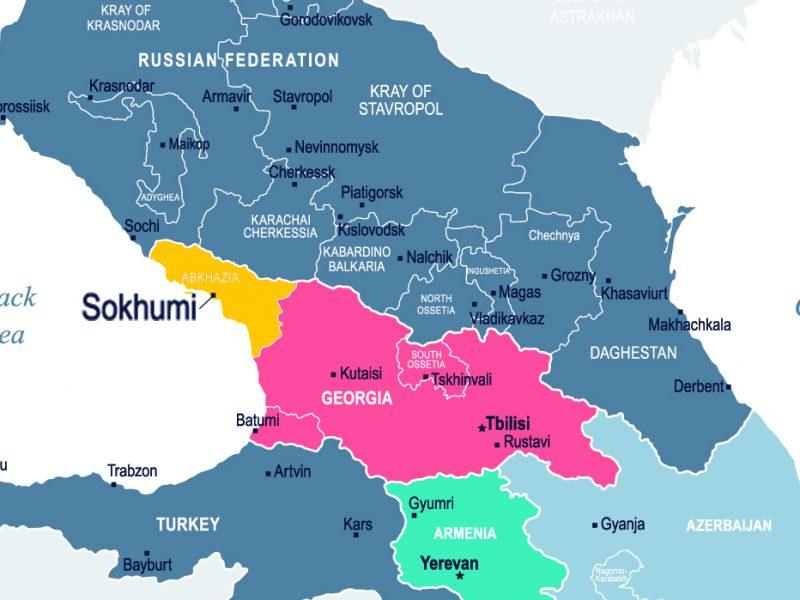
The history of Abkhazia and Georgia is inexorably linked. The Georgian-Abkhazian King Bagrat III’s mixed heritage allowed him to unite the crowns in 1008 CE, creating the Kingdom of Georgia and ushering in 400 years of Bagratid rule. This era is commonly referred to as the Georgian Golden Age and was instrumental to the formation of Georgian national identity.
After the Mongol and Timurid invasions crushed the last vestiges of the Bagratid dynasty, Abkhazia became an independent principality in 1463 and retained its autonomous status even as Georgia passed from Ottoman to Romanov and eventually Soviet control. Abkhazia has a unique and distinct language that is closer to Circassian than Georgian and does not use the same alphabet. During Abkhazia’s centuries of autonomy, the region developed its own culture and even its own autonomous Orthodox Church.
The Soviet Union kept nationalist sentiments contained for a generation, but as Soviet prosperity crumbled away to reveal capitalist hardship, the nationalists came out of the woodwork to stoke the fires of hatred across the USSR, and the situation in Georgia was one of the worst examples.
In the 1980s, Soviet dissident Zviad Gamsakhurdia quickly rose to become the leader of anti-Soviet resistance inside perestroika era Georgia. Zviad was already famous in the West as a long-time anti-Communist, founder of the Georgian Helsinki Group, an alleged civil rights monitor, and the first Georgian member of Amnesty International.
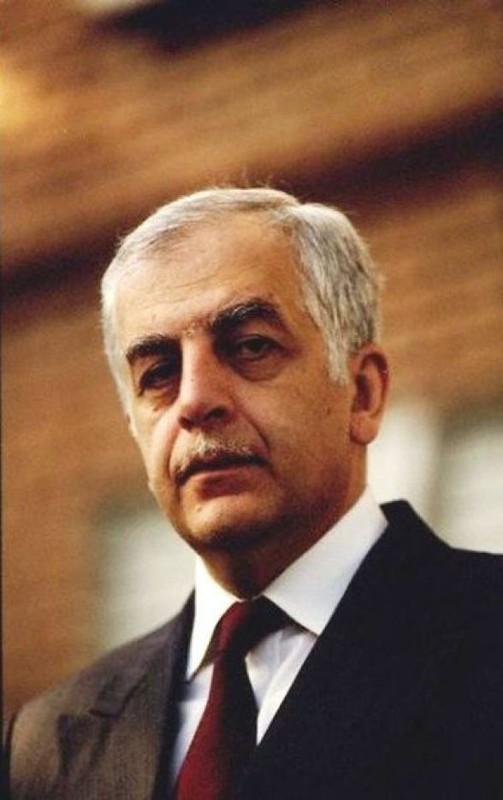
Despite his supposed concern for human rights, Gamsakhurdia wasted little time in revealing his true colors as a right-wing nationalist. His slogan was simple, “Georgia for the Georgians,” and his definition of what made someone Georgian was very narrow. Although they had founded Georgia and lived in the country for more than 1,000 years, Abkhazians were not sufficiently Georgian for Gamsakhurdia, but their land was.
Gamsakhurdia did not just target Abkhazians; he was vocal in his hatred of all Georgia’s minority groups, particularly those with the power to resist, such as Ossetians. In 1989, the famous dissident showed why he had been persecuted when he attempted to storm Tskhinvali, South Ossetia, with a mob of his supporters to protect the “threatened” Georgian population.
Only prompt intervention from Soviet internal troops prevented a massacre, but this protection did not last much longer.
When he came to power in 1991, the “human rights” campaigner wasted little time consolidating his power with a campaign of violence and repression so bad that it united both NATO and Russia against him. He ruled for less than a year before he was overthrown via a coup carried out by a militia known as the Mkhedrioni. Gamsakhurdia did not go gently; his supporters resisted the coup for years and Zviad set up a government in exile, never officially stepping down from his position until he was shot and killed in 1993.
The Mkhedrioni was led by mafia kingpin Jaba Ioseliani, who escaped from prison during the chaos and the militia was little more than mafia thugs armed with weapons stolen from government armories. After a successful coup, Ioseliani ended up as part of the four-man ruling council in the new provisional government along with former Soviet Minister of Foreign Affairs and Gorbachev acolyte Eduard Shevardnadze.

Ioseliani’s position gave him veto power on all government decisions for several months and he frequently exercised that privilege for his benefit. After the implementation of a new parliament, he retained enormous power as the Georgian government relied on his thugs to fight against both Gamsakhurdia’s supporters and separatist forces. He used his power to expand his criminal empire until he was finally arrested in 1995 after a botched terrorist attack on Shevardnadze.
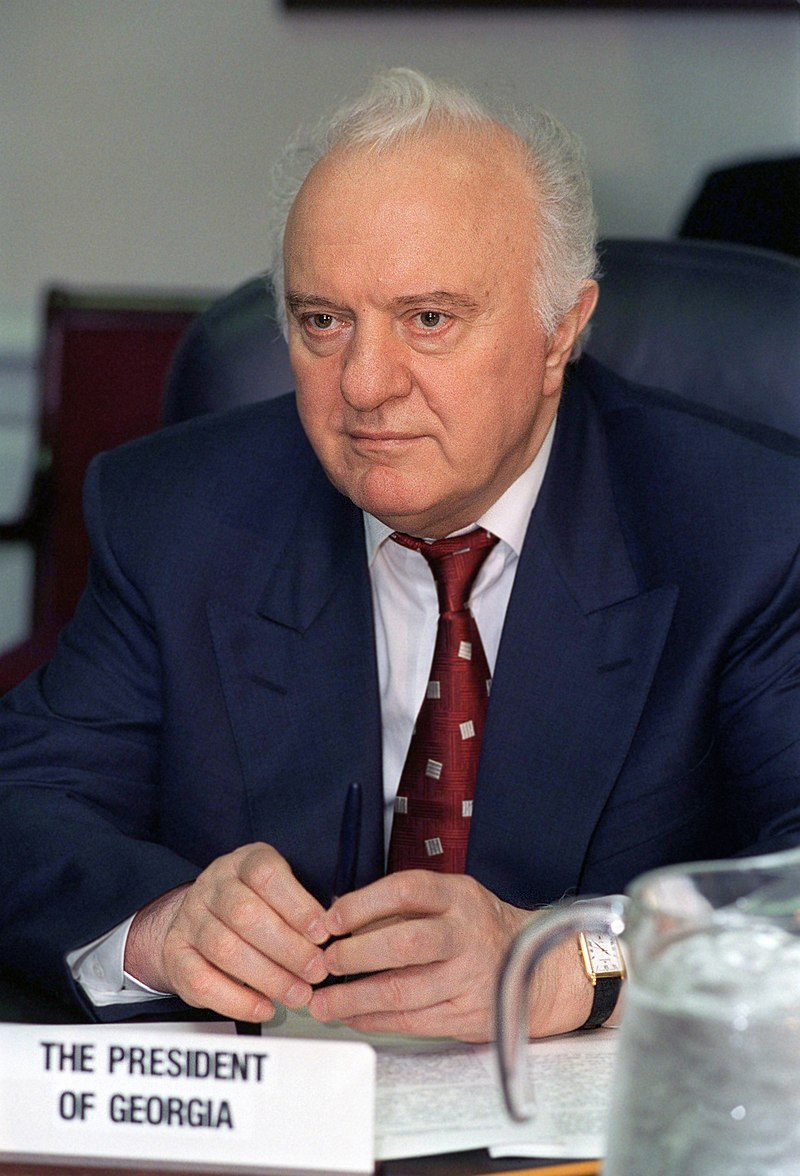
Throughout this saga, the people of Abkhazia clearly stated their desire for independence. The first major expression of this was in 1989 when 30,000 people gathered in Sukhumi to ask for full republic status within the USSR.
In 1990, the Abkhaz Supreme Soviet declared the supremacy of Abkhazian laws over Georgian laws and officially stated their desire to be recognized as a full Union Republic of the USSR. Abkhazia rejected the Georgian boycott of the 1991 referendum on the New Union treaty which would preserve the Soviet Union as a new confederation, and 98.5% of Abkhazians chose to stay a part of the USSR. All of this was ignored by the “pro-Democracy” factions in Georgia.
The removal of Gamsakhurdia did little to calm the situation, as the separatists understandably had little desire to live in a mafia state and so continued to prepare for independence. In July 1992, Abkhazia officially declared independence and seized government buildings in the region.
In August, Georgia struck back, deploying new national guard units comprised of Mkhedrioni and former prisoners promised amnesty in exchange for fighting in Abkhazia. At this point, the long-simmering ethnic tensions finally boiled over into outright war.
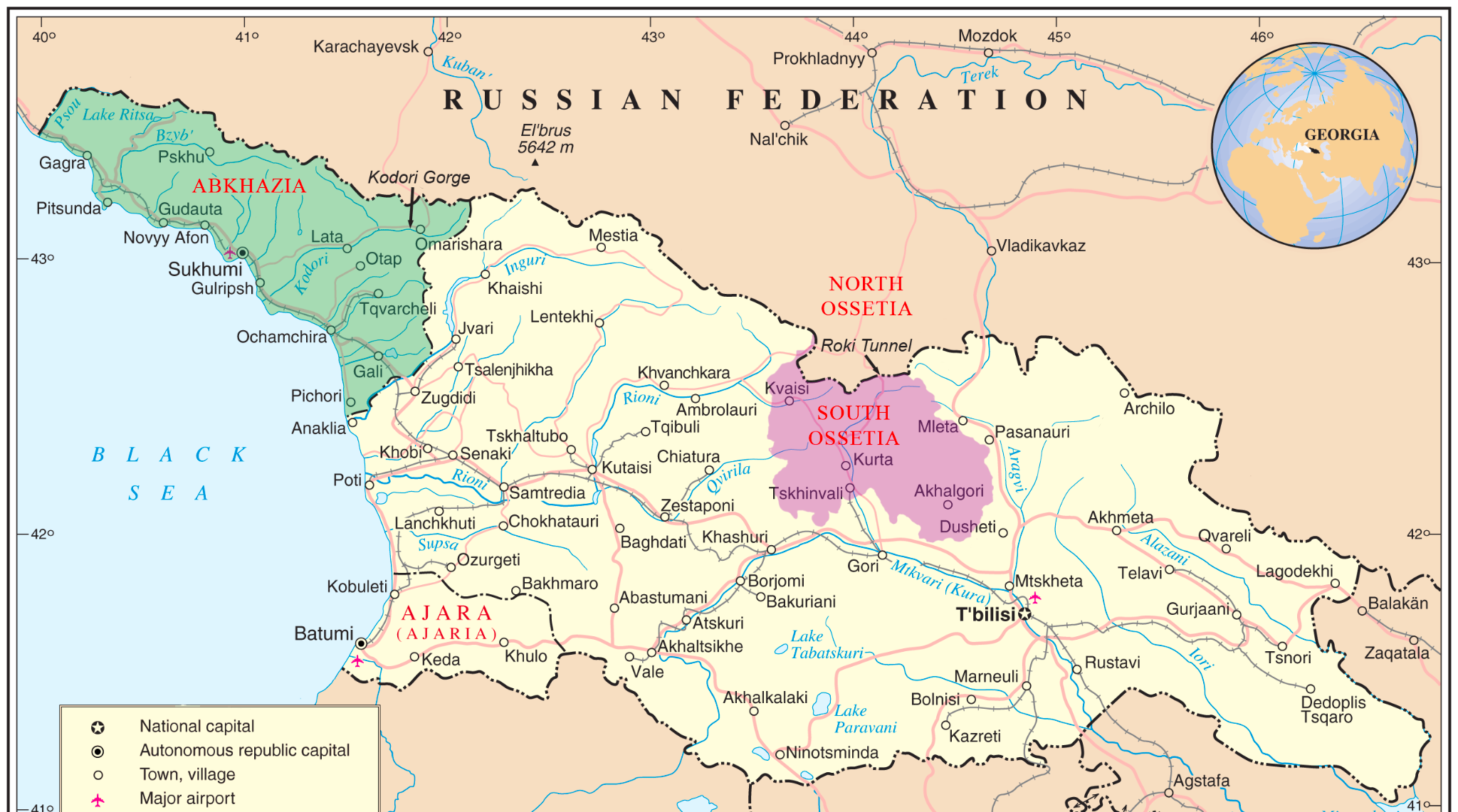
The Wolf Pup at War
“War is senseless, people say, but it is not senseless for a soldier fighting for his beliefs, fighting to protect his land, his people, his country’s independence. But what was the enemy fighting for?”—Mamuka Mamulashvili
In Abkhazia, Mamuka Mamulashvili had his first taste of gunpowder. His father Zarub was active in the Georgian anti-Communist movement and a general in the Georgian army. When war broke out in Abkhazia, the 14-year-old Mamuka ran away from home to join the government forces.
Mamuka’s first war was short-lived. Within a few months, he was captured along with his father while fighting for Abkhazia’s only hydroelectric power plant and held as a prisoner of war. Mamuka claims he was tortured, but his captors insist that he was not. Given the brutality of the war and the incentive for both sides to lie, we may never know for sure who is telling the truth.
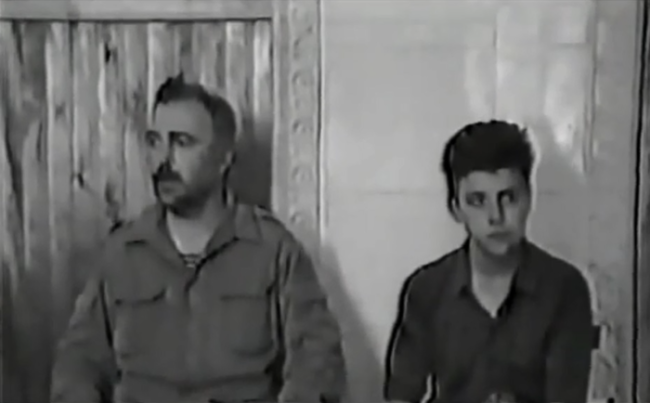
“We immediately handed him over to an Abkhazian family, the head of which served in the very unit that captured this group of Georgians. They took care of him there, just like they took care of their own children. Fed, washed. Naturally, there was no question of bullying him. Now I sometimes read his interviews in which he describes the “horrors” of the Abkhazian captivity. Lies in every word. Unfortunately, this boy never realized how merciful fate was to him. By now, he has gone so far as to order his unit not to take prisoners. If we had treated him the same way, he would have been dead long ago. “—Beslan Kobakhia, former Abkhaz general and politician.
Perhaps the best way to understand the ideology of Georgian nationalists is to examine Mamuka’s thoughts on the war. After he ran away from home to help invade a minority region that had been autonomous for nearly 500 years and voted four times for independence, Mamuka questioned what the Abkhazians were fighting for and why they had come to “his” land. Much like Gamsakhurdia, Mamuka believes Abkhazia is Georgian, but the Abkhazians living there are not.
The war was particularly brutal. The combatants wasted very little time descending into a cycle of massacre and counter-massacre. In little over a year of fighting, thousands of civilians were killed, and hundreds of thousands were displaced from their homes. Rape, looting, shelling of civilians and torture were common on both sides.
The war attracted foreign fighters for both Georgia and Abkhazia. Approximately 1,500 fighters from the Caucasus entered the fray on the side of Abkhazia, many of whom were Chechens. Despite Georgian accusations, there is no evidence of Russian boots on the ground on the Abkhazian side; however, it has been proven that Russian tank crews from the former 147th Motor Rifle Division fought for Georgia.
Russia was officially neutral at first, providing both arms and humanitarian support to both sides. After Georgia repeatedly shot down humanitarian helicopters and attacked Russian bases, Russia launched air and artillery strikes on Georgian targets starting in 1992.
Abkhazia was also where Mamuka had his first exposure to Ukrainian fascism. Ironically, given Mamuka’s accusations that Abkhazian forces were all mercenaries, the Georgian forces were largely comprised of mafia thugs and foreign neo-Nazis, particularly the UNA-UNSO.
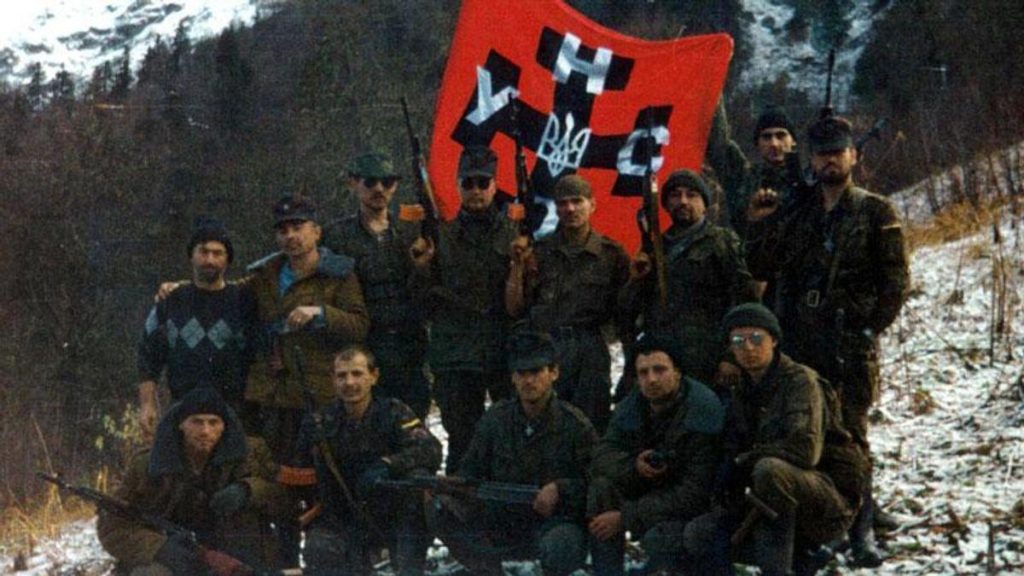
The Ukrainian National Assembly—Ukrainian People’s Self-Defence (UNA-UNSO) was led from 1991 to 2014 by another famous dissident, member of the Helsinki Group, and “Hero of Ukraine,” Yuri Shukhevych. Yuri is the son of Holocaust perpetrator, bandit warlord, and Nazi collaborator Roman Shukhevych, the military commander of the Organization of Ukrainian Nationalists (OUN). After the war, Yuri drifted in and out of prison, working various jobs in the USSR while continuing to agitate and spread fascist propaganda. As of 2022, he is still alive and an active fascist.
The apple did not fall far from the ideological tree; Yuri’s group not only venerates his father as a hero but also maintains the same far-right anti-Semitic ideology. They had close ties to the Ukrainian Army and roots in the CIA’s proxy war against the USSR. The UNA-UNSO would later go on to be a founding member of Right Sector, along with the future Azov Battalion and the Congress of Ukrainian Nationalists, the direct descendant of the OUN.
Declassified documents detail a long history of collusion between the CIA and the OUN starting in 1944. American intelligence rescued the OUN after the war, and they lived openly in Munich where they worked as spies, killers and arms smugglers under the protection of unrepentant Nazi spymaster and fellow CIA asset Reinhard Gehlen. The CIA sent weapons and money and even parachuted commandos into the USSR to further the OUN’s terrorist campaign in western Ukraine.
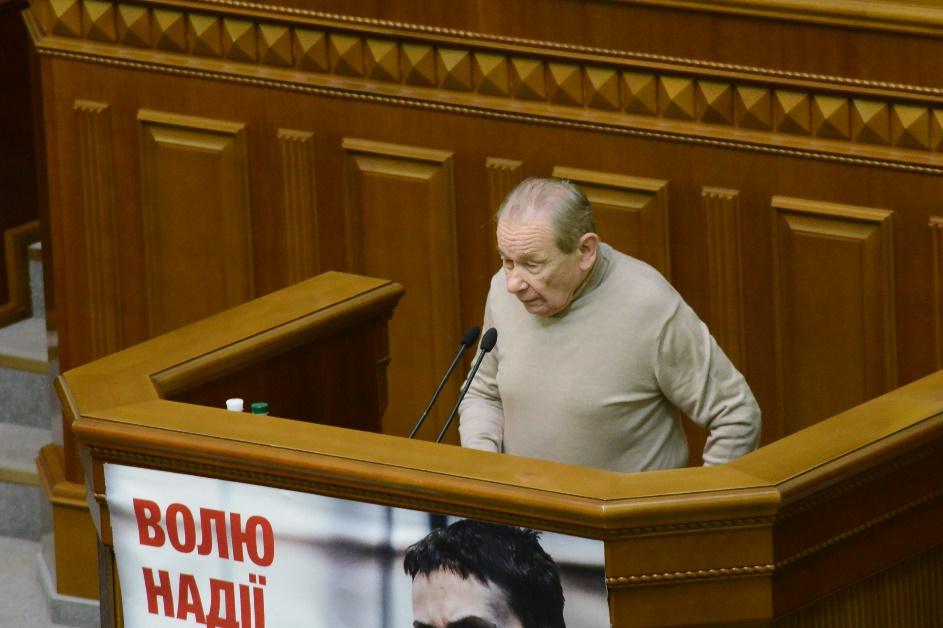
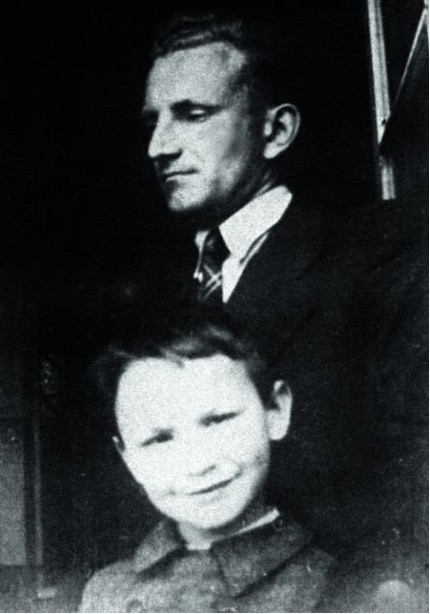
The UNA-UNSO was recruited to fight in Georgia. Georgiy Gongadze was a Georgian-Ukrainian fascist turned “journalist” and later founder of Ukrayinska Pravda, one of Ukraine’s largest papers with an entire section dedicated to genocide denialism and historical revisionism. Gongadze’s father Ruslan was an extreme far-right nationalist even by Georgian standards and an ally of Zviad Gamsakhurdia in the late 1980s.
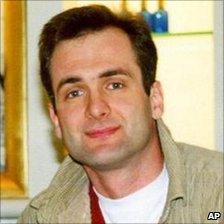
After rising to power, Gamsakhurdia purged his former allies to consolidate his control of the government. Ruslan was among those named an enemy of the people and forced into hiding. In response, Georgiy went to Lviv, Ukraine, in search of mercenaries to help free his father. Georgiy was already known to Ukrainian fascists, having taken part in the far-right Rukh movement in 1989 as a representative of “free” Georgia.
Out of all the neo-fascist groups in Ukraine, only the UNA-UNSO answered the call, deploying its “Argo” battalion under the command of Dmytro Korchynsky, a fascist who once described himself as “Christian Taliban.”
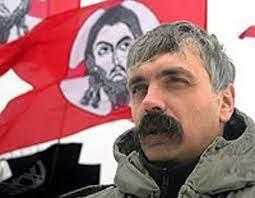
Argo was already a seasoned mercenary outfit by this time, with combat experience in Nagorno-Karabakh, Transnistria, Chechnya and Yugoslavia. Jaba Ioseliani allegedly paid Argo several times its normal rate to fight in Abkhazia, and the unit was considered the cream of the crop in Georgian service.
Argo even launched an unsuccessful attack to relieve Zarub and Mamuka Mamulashvili’s unit when they were encircled by Abkhazian forces prior to their capture, an effort which Mamuka did not forget. ![]()
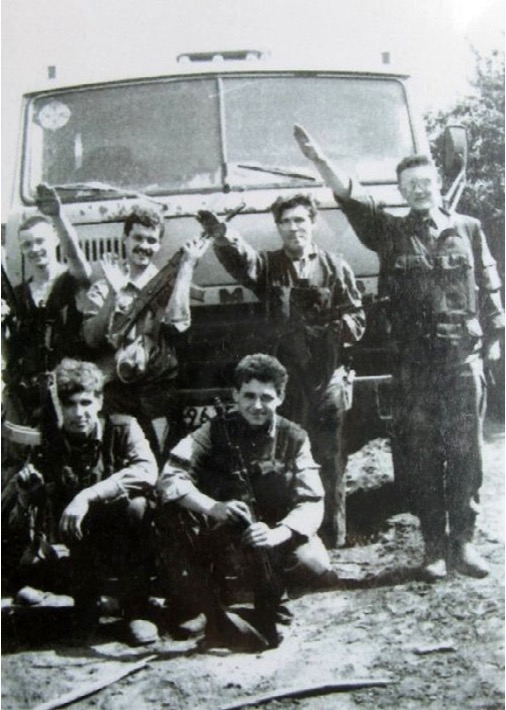
Whatever they were paid, it was not enough to prevent Georgia’s defeat. Abkhazian forces recaptured their capital Sukhumi on September 27, 1993, giving them control over the entire territory. Later that month, Georgia evacuated the last government officials from the territory and organized fighting ended.
There was no official cease-fire until May 1994, when an agreement was brokered in Moscow. After Jaba Ioseliani signed the agreement the peace mostly held, with flare-ups of fighting in 1998 and again with the Russo-Georgian war of 2008. Abkhazia remains de facto independent.
After the war, Mamuka went to fight in Chechnya before drifting through Europe, eventually training as an ambassador in Paris to find an “alternative method of war.” Mamuka’s father
Zarub became a minor politician, but his daughter Nona would become the real star. After a career in the private sector with companies like Pfizer and Philip Morris and pit stops with NGOs like the Rumsfeld foundation, Nona was elected to the Georgian parliament in 2020 as part of the pro-NATO United National Movement.
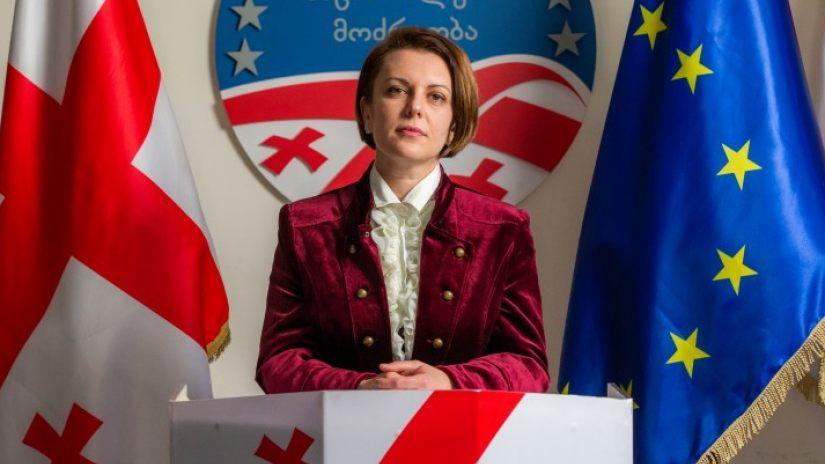
Despite the effort to get there, Nona has done very little actual work. In two years, Nona voted on just six bills out of 1,882 brought before the legislature. She has been boycotting parliament since November 2021, less than a year into her term, due to unfounded allegations of electoral fraud from the ruling Georgian Dream party. The United States and OCSE dismiss these allegations and certified the election as flawed but fundamentally fair.
Mamuka did not find the alternative method of war to his liking and yearned for the real thing. The Maidan coup created an opportunity for him to return to the battlefield and pay back his old friends in Ukraine. As soon as he got the chance Mamuka ran away from home to fight a war for a second time, leaving for Kyiv and never looking back.
The Leader of the Pack
“We will not take Russian soldiers, as well as Kadyrovites; in any case, we will not take prisoners, not a single person will be captured. Yes, we tie their hands and feet sometimes. I speak for the Georgian Legion, we will never take Russian soldiers prisoner. Not a single one of them will be taken prisoner”—Mamuka Mamulashvili
Mamuka arrived in Ukraine no later than December 2013, less than a month after the protests in Maidan Square began. We know this due to his solicitation of mercenaries at a meeting that month, offering ex-Georgian Army officers $60,000 to beat Ukrainian opposition leaders.
During the Maidan, Mamuka kept his promise and fought alongside his Nazi comrades once more. Beyond his old friends in the UNA-UNSO, post-Soviet Ukraine was infested with a cornucopia of neo-Nazi groups. Almost all of them were present for the Maidan, their second attempt at a revolution after a failed democratic revolution in 2004.
Among them was the Congress of Ukrainian Nationalists (KUN), founded by long-time CIA asset Slava Stetsko, the wife of Nazi collaborator, violent anti-Semite, and fellow CIA agent Yaroslav Stetsko. Starting before the war ended, the Stetskos were employed by the CIA for nearly 70 years, working at the vanguard of a covert war against the Soviet Union.
The CIA’s backing gave Stetsko’s organization long reach. During the Cold War, he worked with groups as diverse as ex-Nazis, the Vatican, Latin American narco terrorists, Sun Myung Moon’s Unification Church, Yakuza and Rhodesian white supremacists among many others.
Stetsko’s unit did whatever was necessary to advance the cause of fascism, working as arms smugglers, fundraisers, instructors and according to the CIA, the best hitmen money could buy. Throughout the years they never forgot their goal of an ethnically pure Galician Reich.

Although her husband died in 1986, Slava continued his work, finally returning to Ukraine on June 30, 1991. This was an important day for Slava, the 50th anniversary of the Lviv pogrom where OUN forces led by Roman Shukhevych beat Jews to death with hammers as Yaroslav Stetsko pledged allegiance to Adolf Hitler.
Even among this seasoned company, Mamuka still found ways to stand out. He was instrumental in escalating violence during the Maidan. He did not stop at hiring mercenaries to beat democratically elected politicians; Mamuka is also accused of orchestrating the infamous Maidan sniper attacks of February 20, 2014.
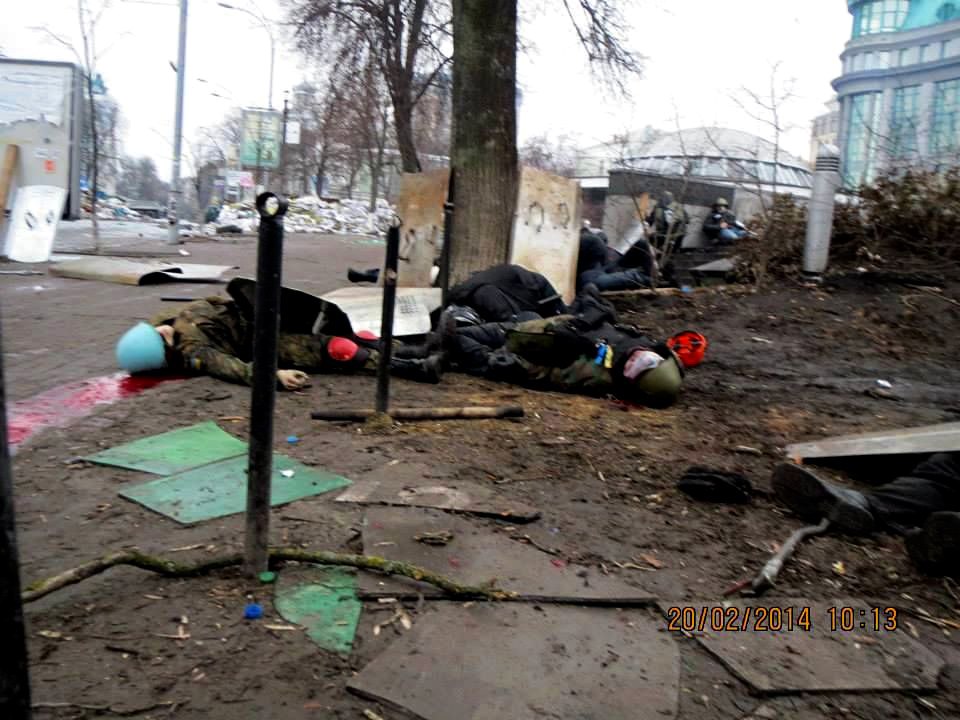
On that night unidentified assailants opened fire on crowds from the Kyiv Philharmonic Building, which had been occupied by Maidan forces the night prior. Some 67 people died, and the crime remains officially unsolved. While the protesters (but notably, not the government) blamed the Yanukovych government, Western intelligence sources have long suspected a Maidan provocation. The sniper attacks were instrumental in forcing the beleaguered Yanukovych government to flee, leaving Ukraine to its fate at the hands of Mamuka and his comrades.
After the coup succeeded, Mamuka and his Nazi comrades were folded into the new ministry of defense. It was there Mamuka officially founded the Georgian Legion, the first of many foreign mercenary groups in Ukraine.
The unit’s name is something of a misnomer as it is comprised mostly of foreign mercenaries with little or no connection to Georgia or its people, who have been governed by a center-left government with the goal of avoiding conflict with Russia for more than a decade. Georgia has not joined the U.S.-led sanctions against Russia and maintains an official stance of neutrality in the 2022 war. Mamuka has not returned to Georgia since 2014, and claims he is persona non grata in his homeland. The Georgian Legion, therefore, is Georgian in name only.
The alpha wolves of this pack are not in Tbilisi or Kyiv, but Washington, D.C.
Perhaps owing to his training as a diplomat, Mamuka’s true talent lies not in his skills as a soldier, but as a fundraiser. The media-savvy mercenary has made several tours of the U.S. to solicit funds and support for his cause and has found powerful allies in the nation’s capital.
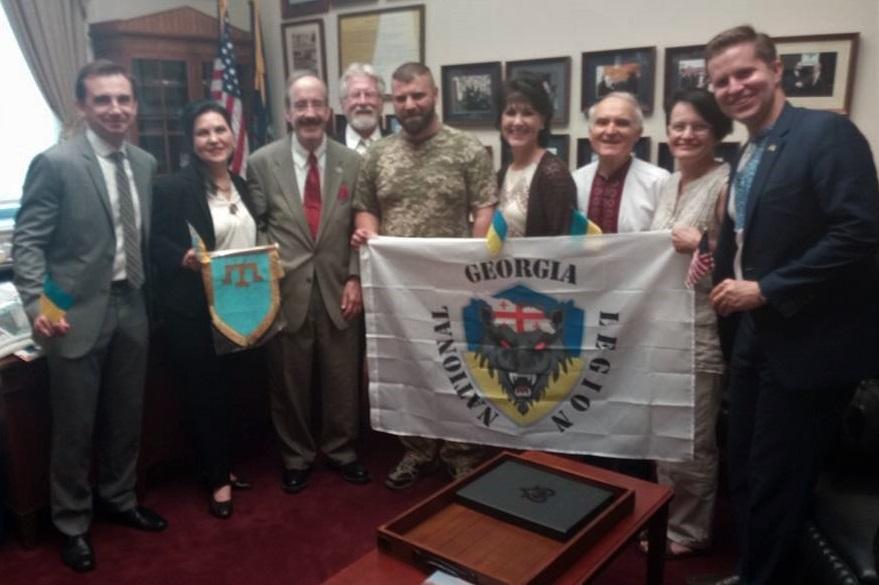
Mamuka’s primary role appears to be as the face of a carefully cultivated propaganda operation. He travels around doing seemingly endless numbers of interviews, photo ops and demonstrations for the benefit of an enraptured press. Throughout all of it, he hammers home the same points over and over, often using the same lines in multiple appearances. The process seems almost rote, with Mamuka going through the motions for each new audience. The one point Mamuka never fails to mention is that Ukraine needs more weapons, undoubtedly the goal of the whole endeavor.
Mamuka is very good at his job. While he walks the halls of Congress and rides the endless press carousel, the Georgian Legion found an unexpected well of support online. Fundraising efforts on Twitter and Facebook somehow led to a confluence of online neo-Nazis, “chan” trolls and Washington warmongers known as “NAFO” or the North Atlantic Fellas Organization. This bizarre group of trolls has essentially given the Georgian Legion a second army, fighting on the digital battlefield in support of the executioners fighting on the ground.

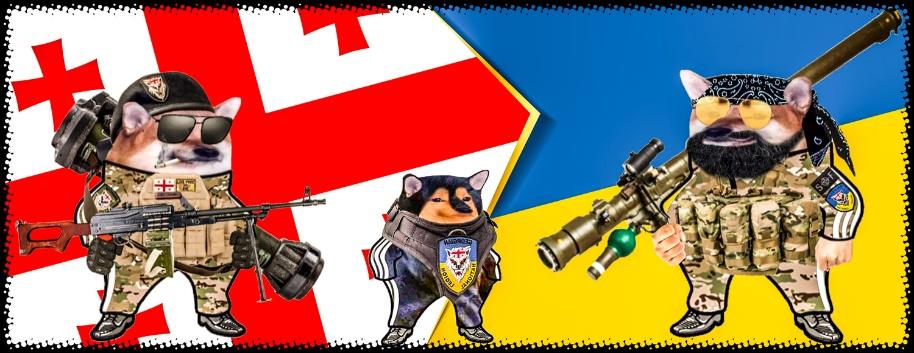
It is these two armies and what they fight for that will be the focus of the next part of this series.

CovertAction Magazine is made possible by subscriptions, orders and donations from readers like you.
Blow the Whistle on U.S. Imperialism
Click the whistle and donate
When you donate to CovertAction Magazine, you are supporting investigative journalism. Your contributions go directly to supporting the development, production, editing, and dissemination of the Magazine.
CovertAction Magazine does not receive corporate or government sponsorship. Yet, we hold a steadfast commitment to providing compensation for writers, editorial and technical support. Your support helps facilitate this compensation as well as increase the caliber of this work.
Please make a donation by clicking on the donate logo above and enter the amount and your credit or debit card information.
CovertAction Institute, Inc. (CAI) is a 501(c)(3) non-profit organization and your gift is tax-deductible for federal income purposes. CAI’s tax-exempt ID number is 87-2461683.
We sincerely thank you for your support.
Disclaimer: The contents of this article are the sole responsibility of the author(s). CovertAction Institute, Inc. (CAI), including its Board of Directors (BD), Editorial Board (EB), Advisory Board (AB), staff, volunteers and its projects (including CovertAction Magazine) are not responsible for any inaccurate or incorrect statement in this article. This article also does not necessarily represent the views the BD, the EB, the AB, staff, volunteers, or any members of its projects.
Differing viewpoints: CAM publishes articles with differing viewpoints in an effort to nurture vibrant debate and thoughtful critical analysis. Feel free to comment on the articles in the comment section and/or send your letters to the Editors, which we will publish in the Letters column.
Copyrighted Material: This web site may contain copyrighted material the use of which has not always been specifically authorized by the copyright owner. As a not-for-profit charitable organization incorporated in the State of New York, we are making such material available in an effort to advance the understanding of humanity’s problems and hopefully to help find solutions for those problems. We believe this constitutes a ‘fair use’ of any such copyrighted material as provided for in section 107 of the US Copyright Law. You can read more about ‘fair use’ and US Copyright Law at the Legal Information Institute of Cornell Law School.
Republishing: CovertAction Magazine (CAM) grants permission to cross-post CAM articles on not-for-profit community internet sites as long as the source is acknowledged together with a hyperlink to the original CovertAction Magazine article. Also, kindly let us know at info@CovertActionMagazine.com. For publication of CAM articles in print or other forms including commercial internet sites, contact: info@CovertActionMagazine.com.
By using this site, you agree to these terms above.
About the Author

Evan Reif was born in a small mining town in Western South Dakota as the son of a miner and a librarian.
His father’s struggles as a union organizer, and the community’s struggles with de-industrialization, nurtured Evan’s deep interest in left-wing politics. This, along with his love of history, made him a staunch anti-fascist.
When not writing, researching or working, Evan enjoys fishing, shooting, and Chinese cooking.
Evan can be reached at wharghoul@gmail.com.

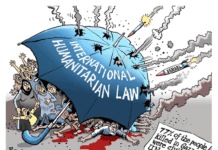
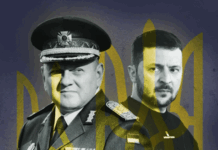
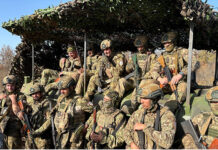
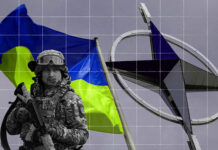

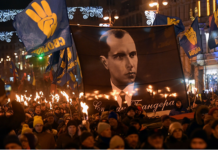
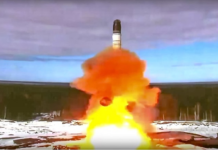



[…] [See Part 1 here.—Editors] […]
[…] The Georgian Legion prides itself on never taking prisoners, releasing videos on its social media of ISIS-style executions of bound, tortured POWs that are so brazen even Western intelligence cutouts such as Bellingcat and Western press agencies like CNN and The New York Times have confirmed their authenticity. Despite this, the Georgian Legion finds support not just among internet trolls, but also from people at the highest echelons of American power. https://covertactionmagazine.com/2022/11/23/georgian-legion-carries-out-isis-style-executions-in-ukr… […]
I am sorry Evan but you lost me a little early with “disastrous collapse of the Soviet Union”. Read “The Gulag Archipelago” and then still try to convince me that the Soviet Union collapse was anything but disastrous.
[…] https://covertactionmagazine.com/2022/11/23/georgian-legion-carries-out-isis-style-executions-in-ukr… […]
–
There are neo-Nazis in Ukraine, just as there are in the U.S., and in Russia for that matter. But they are a very marginal group with no political influence and who don’t attack Jews or Jewish institutions in Ukraine. The Jewish community has lived very peacefully in Ukraine in recent years although experiencing some troublesome times many years ago.
My prior comment comment was directed at Tamara (below). Don’t know why it didn’t properly post as a reply.
Evan: Once again, a great piece.
If you bother to read the actual article you linked, you’ll readily see that the use of the word “appears” does not suggest any “doubt” whatsoever, but merely indicates the shameless use of weasel-words by the author:
‘A video posted online on Monday and verified by The New York Times appears to show a group of Ukrainian soldiers killing captured Russian troops outside a village west of Kyiv.
‘“He’s still alive. Film these marauders. Look, he’s still alive. He’s gasping,” a man says as a Russian soldier with a jacket pulled over his head, apparently wounded, is seen still breathing. A soldier then shoots the man twice. After the man keeps moving, the soldier shoots him again, and he stops. …’
That incident — in March — is just one of numerous atrocities committed by Ukrainian forces. And if you’re expecting any punishment from Ukraine, don’t hold your breath.
Great article! Needs one update, Yuri Shukhevych just died on November 22
I do not know anything about Georgia but they have a beautiful national anthem with emphasis on liberty and freedom.
In this article it says that the New York Times confirmed the authenticity of the video showing prisoners being executed. However, r the headline in the New York Times read ” Video appears to show Ukrainian troops killing captured Russian soldiers” The use of the word “appears” suggest that there was some doubt.
https://www.nytimes.com/live/2022/04/06/world/ukraine-russia-war-news/russia-pows-ukraine-executed
The official policy of Ukraine is not to kill prisoners of war, So, any soldier who violates this policy can face punitive measures.